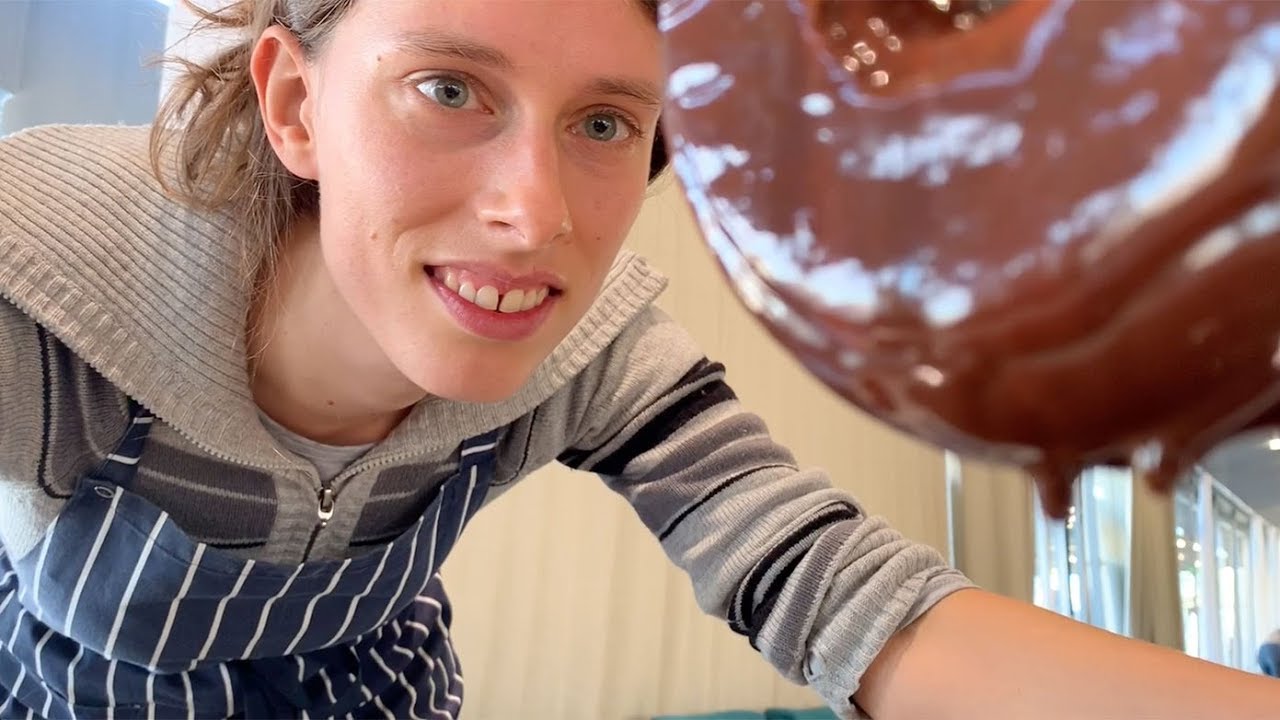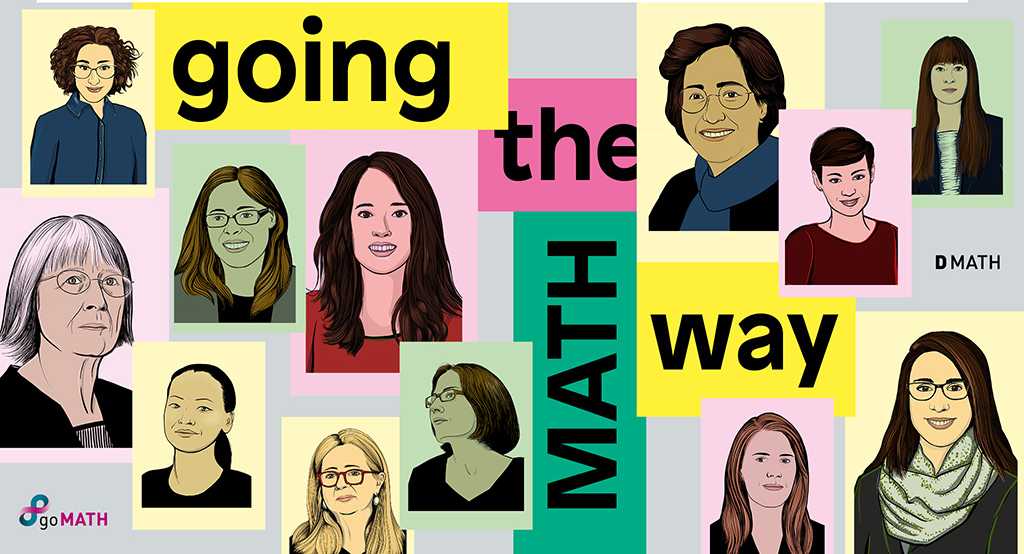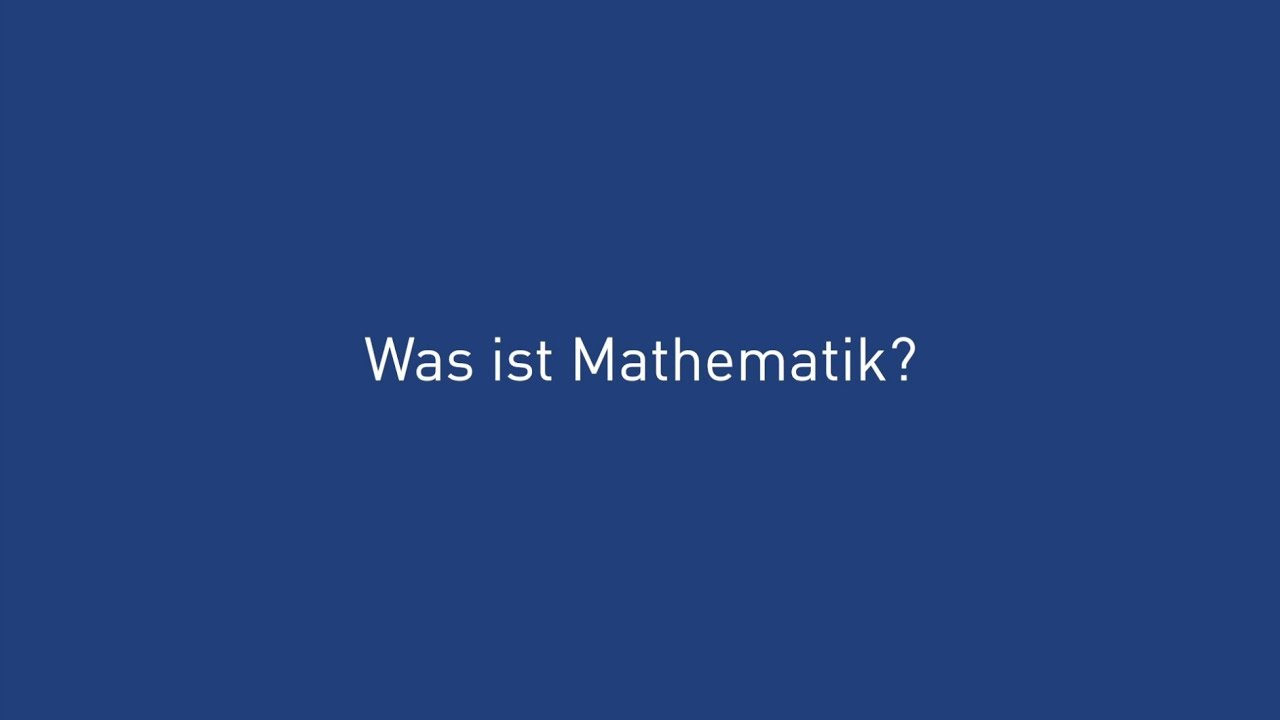Chocolate, satellites and the beauty of maths
What do liquid chocolate and the movements of satellites have in common? Jagna Wiśniewska is intrigued by such mathematical puzzles. Together with seven other women, she will show in the goMATH series of events at ETH Zurich why she is fascinated by mathematics.

Chocolate runs down the surface of a sweet bun, covering it evenly on all sides. Jagna Wiśniewska watches it closely. As soon as the chocolate jet hits the pastry, it disperses in all directions. It covers the bun until it merges into a jet again.
However, it behaves completely differently on a doughnut with a hole in the centre. The hole is key: it gives the surface two extra points at which the chocolate can merge before dispersing into two directions. These points allow mathematicians such as Wisniewska to draw conclusions about the form: that a doughnut is shaped like a ring or ‘torus’ and a bun resembles a sphere.
Wiśniewska examines such relationships between form, structure and movement in geometry. She uses buns and doughnuts simply as visual examples: her research focuses on the orbits of satellites rather than baked goods. But certain principles and rules apply to both.
This is exactly why Wiśniewska loves mathematics: things that appear completely dissimilar can be described with the same type of equation. “To me, that is the beauty of mathematics,” she explains.
The beauty of mathematics
Many mathematicians can relate to this notion of beauty; they consider it a defining characteristic of their results. It can relate to the beauty of well-formed proportions, such as in Gothic cathedrals or the golden ratio.
But the specific beauty of maths manifests itself in the clarity, simplicity and elegance of mathematical propositions and proofs, and in their general truth. Wiśniewska agrees: “When I manage to solve an equation after a long struggle, I always find the results beautiful.”
She has an apt simile: she compares this kind of beauty to the view from the summit of a mountain after an exhausting hike up. When you reach the top, you have a clear view of everything. You see a whole network of valleys and paths and spot those that snake their way up to the summit. Some trails are dead ends. “Sometimes, you have to turn around and try another route,” the Polish mathematician explains.
She likes to hike herself and appreciates how close Zurich is to the mountains. “But once you finally get to your destination, you enjoy the view all the more. You get the same sensation when you prove a theorem or solve a particularly tricky equation.”
The explorer’s thrill

Wiśniewska is intrigued by this thrill and the sense of exploring new territory: “There are barely any geographical locations left that no human has seen before. In mathematics, on the other hand, we keep discovering new places. The only border is our own mind,” she says. “This sense of exploration and discovery in mathematics never ceases to amaze me.”
In Wiśniewska’s field of specialism, a sense of adventure is a great advantage. Symplectic geometry is a very young sub-discipline that emerged only in the mid-1980s. Its foundations have remained the subject of intense debate even to this decade. It has its beginnings in the classical physics of the 19th century: in principle, it investigates the position and movement of particles in space and how they relate to energy.
Humans encounter examples of those systems in their everyday life. Even though these systems can be described by relatively simple mathematical equations, they may be too complex to be solved explicitly with a precise formula.
The task is nontrivial even in simple, bounded spaces such as spheres and tori, but becomes even more challenging in non-bounded spaces like cosmos. The field of symplectic geometry is full of unsolved mathematical questions and puzzles to this day.
Closed orbits and open paths
When a particle moves through space and returns to its original position, mathematicians talk about a closed orbit. The starting position is called the fixed point. This applies to planets that orbit stars and – as in Wisniewska’s research – satellites that orbit planets.
Mathematicians can use such fixed points and closed orbits to determine the properties of spaces and forms, as the example of buns and doughnuts illustrates. Wisniewska wants to find out where and how a satellite can be placed in space to ensure that it remains in a closed orbit and does not collide with a planet or drift away into infinite space.
Finding the right orbit is not easy. The shape of the set with constant energy can provide important inferences as to whether or not there is a closed orbit.
Wiśniewska grew up in Poland and completed her degree at the University of Warsaw. During an Erasmus exchange in the Netherlands, she met Federica Pasquotto, who became her doctoral supervisor at the University of Amsterdam in 2017. For the past year, Wiśniewska has been a postdoctoral researcher at ETH in Will Merry’s group.
She enjoys the working environment in the ETH main building and the open exchange within the group. This is important to her: “Mathematics thrives on the exchange of views and on mutual encouragement to try your own ideas.” How her career will progress is still open.
But she has a message for schoolgirls who are contemplating a degree in mathematics: “Give it a try. You can do it. There are no borders in mathematics.”
goMATH – Women in Mathematics
From 11–22 March 2019, the Department of Mathematics is organising a series of events and an exhibition dedicated to women in mathematics. The exhibition in the main hall of ETH Zurich will present the 27 female mathematicians, their research and their professional life to date. It will also show objects used by pupils in a competition to present certain mathematical issues in an understandable way.
The first week will focus on a symposium at which internationally renowned female mathematicians will present their research. The second week focuses on the career opportunities that arise from studying mathematics. Female mathematicians from different industries exchange their experiences with schoolgirls and students. There will also be workshops for school classes to introduce them to the world of mathematical thinking.
Further information about goMATH: www.math.ethz.ch/gomath.
Further Information on the exhibition in the ETH main building.

